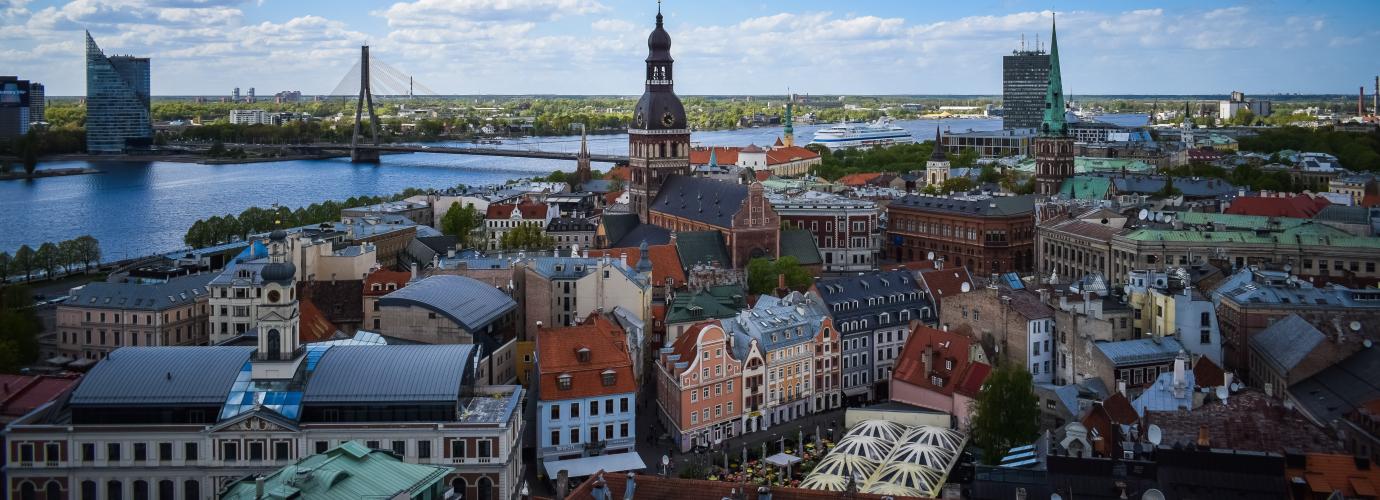Types of institutions
Post-secondary vocational education can be obtained in various types of vocational education institutions:
- profesionālā vidusskola or amatniecības vidusskola - vocational upper-secondary school; completion entitles to continue studies in a higher education institution.
Post-secondary non-tertiary education (pēcvidējā izglītība) – in Latvia the programmes (ISCED 4) lie between the upper-secondary and tertiary levels of education. Nationally they are qualified as upper-secondary programmes. The further vocational programmes (1-3 years long) and professional improvement programmes (at least 160 hours long, which may be as a part of qualification) fall in this category. These programmes are oriented only to acquisition of professional knowledge and skills. Training process and assessment is organised likewise to other vocational upper-secondary education programmes. The students are usually older than those at ISCED level 3.
| Level | Corresponding level of education and term in Latvian | Name of corresponding institution | |
| ISCED 4 | Post-secondary non-tertiary education | vidējā profesionālā izglītība (vocational upper-secondary education) | Profesionālās izglītības iestāde (vocational education institution) |
Geographical accessibility
In December 2008 the government decided to introduce changes in vocational education system and to close several education programmes. The grounds for such decision is the fact that these education programmes prepare specialists who are not demanded at labour market.
In December 2009, the Guidelines for the Optimisation of the Network of Vocational Education Institutions 2010 - 2015 were adopted by the Cabinet of Ministers that foresee further development of vocational education. As part of the optimisation of the network of vocational education institutions launched in 2011, 23 professional competence centres have already been established. Structural reforms has continued by merging several secondary music and art schools by 2020 and establishing some more centres of competence.
Admission requirements
Students are free to apply for admission to the preferred school. Each school (with the consent of the founder) is allowed to define its own admission criteria. This applies also to the institutions providing upper-secondary vocational and post-secondary vocational programmes.
Post-secondary non-tertiary vocational education (ISCED 4B) are to be implemented after graduating from general upper-secondary programmes. They are focused towards mastering purely professional skills and knowledge.
Age levels and grouping of students
This type of vocational programme differs from upper-secondary education with requirements for previous education – it is designed for general upper-secondary school graduates at age of 18-20 and is more oriented towards acquisition of vocational knowledge and skills. Therefore, the duration of the programme is shorter. Generally other characteristics and features are the same as for upper-secondary level.
Organisation of the school year
In vocational upper-secondary education, the regular school year lasts 40 weeks. It is longer than in general upper-secondary education because of the field practice, and may differ depending on the particular vocational education programme. Therefore, also the length of summer holidays is shorter for students of vocational education.
Organisation of the school day and week
The school week in vocational upper-secondary schools lasts 5 days. The school day may contain a maximum of 8 lessons. The duration of lessons is either 40 or 45 minutes, it is upon the decision of the school head.
In vocational upper-secondary schools, total number of lessons per week is 36 (for students under the age of 18) and 40 hours (starting from age of 18). The minimum study load in vocational upper-secondary programmes is 5760 lessons (for programmes which are started after the completion of basic education) or 3120 lessons (for post-secondary non-tertiary programmes which are started after the completion of upper-secondary education).

